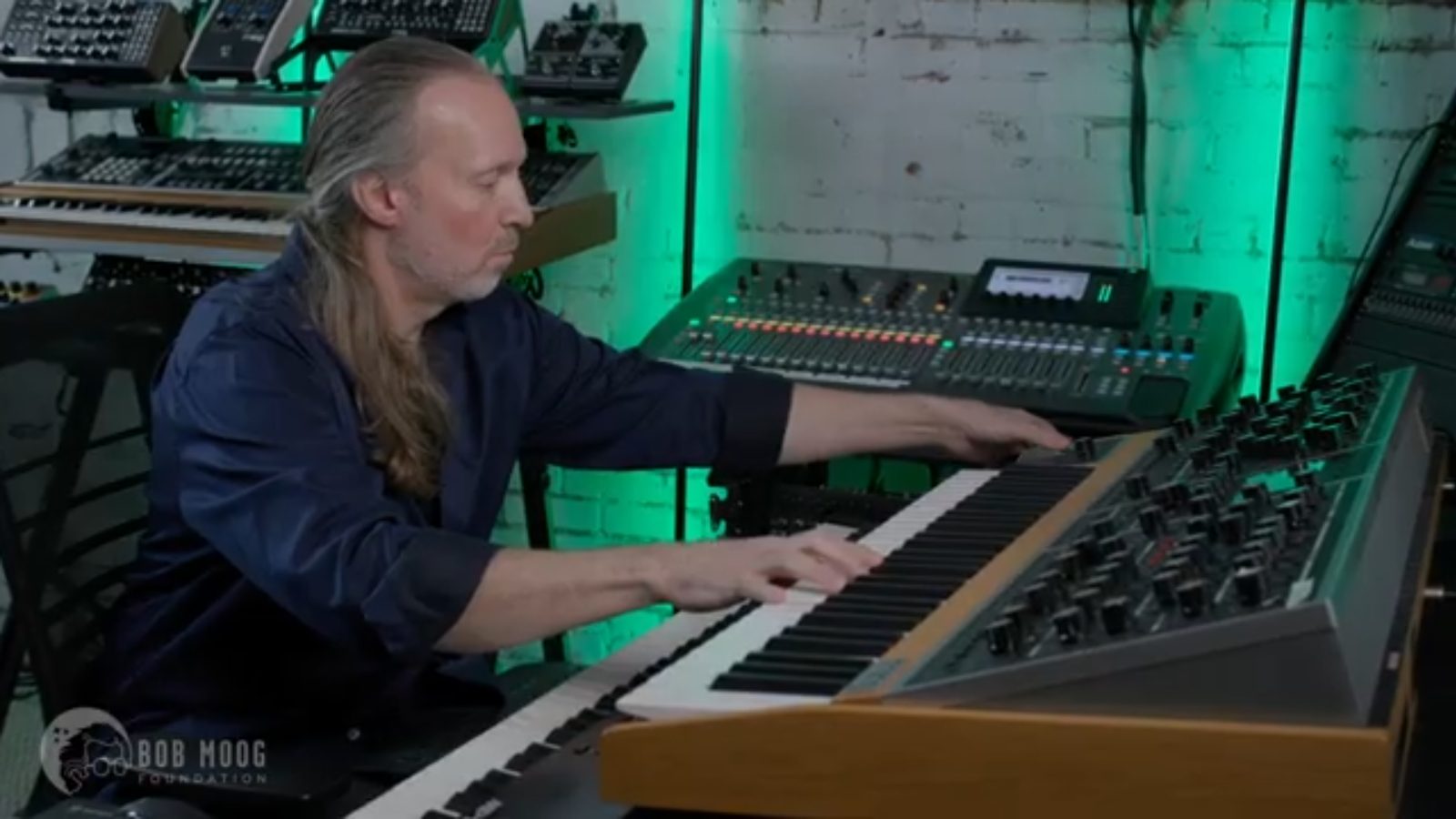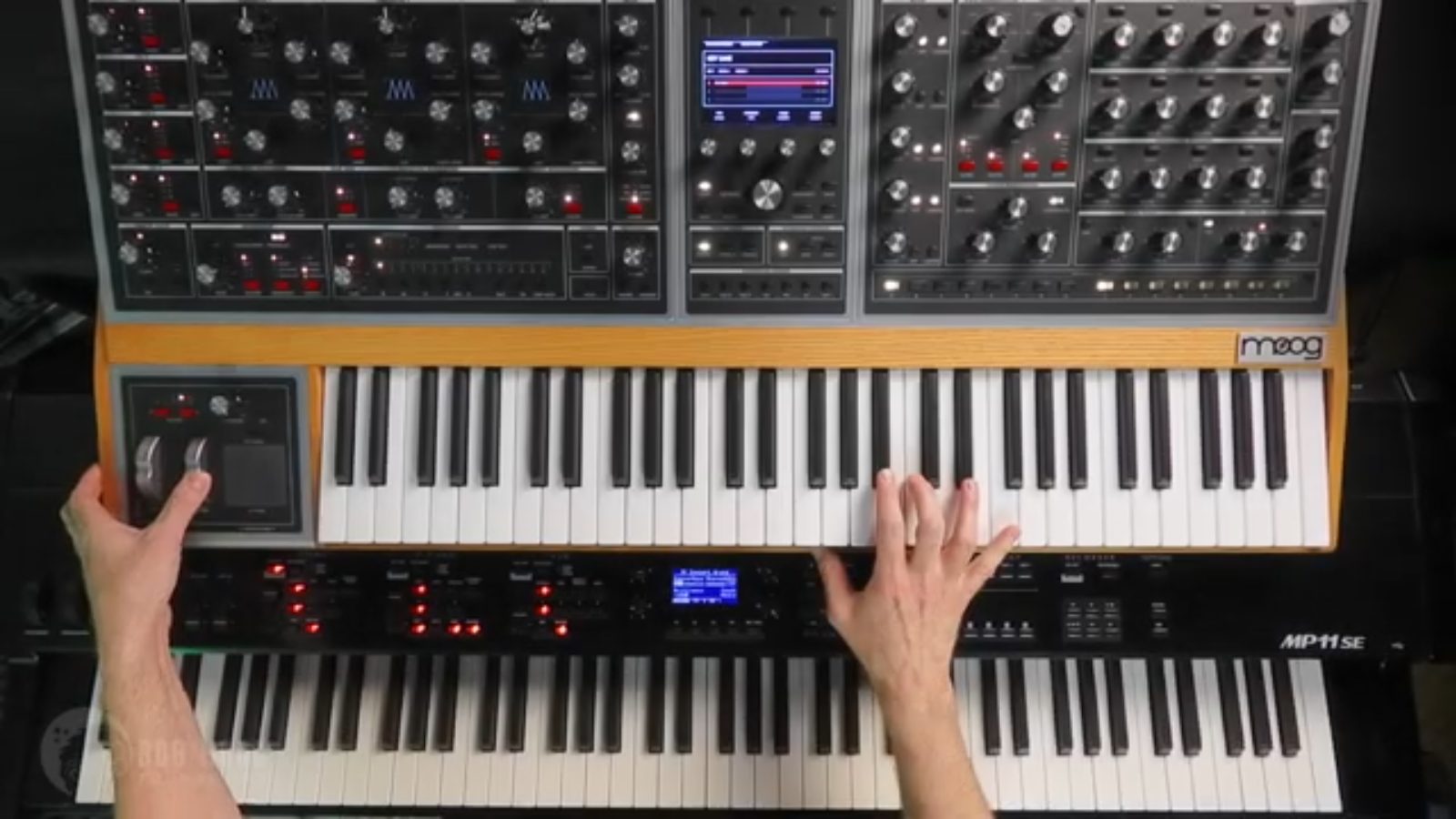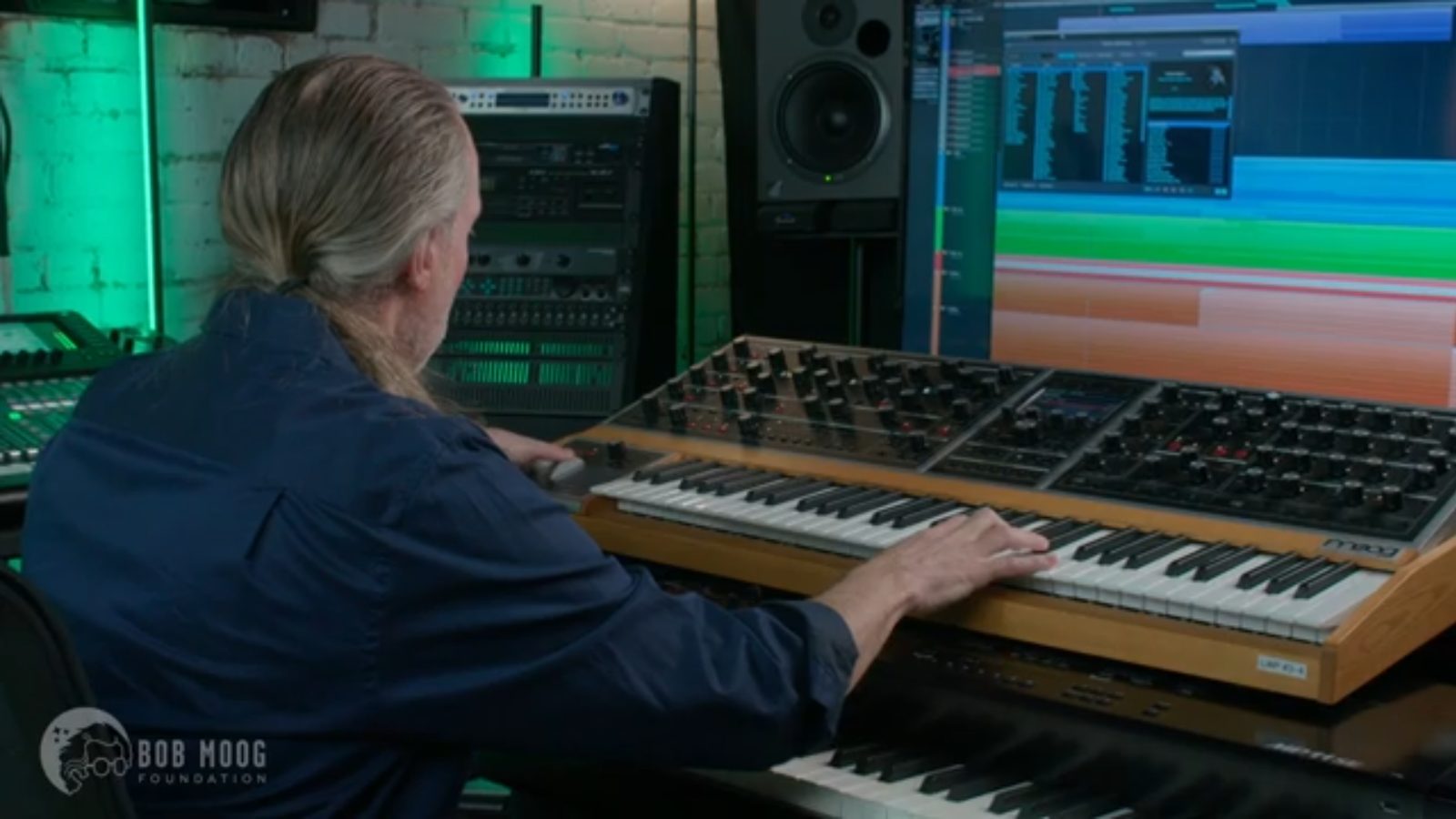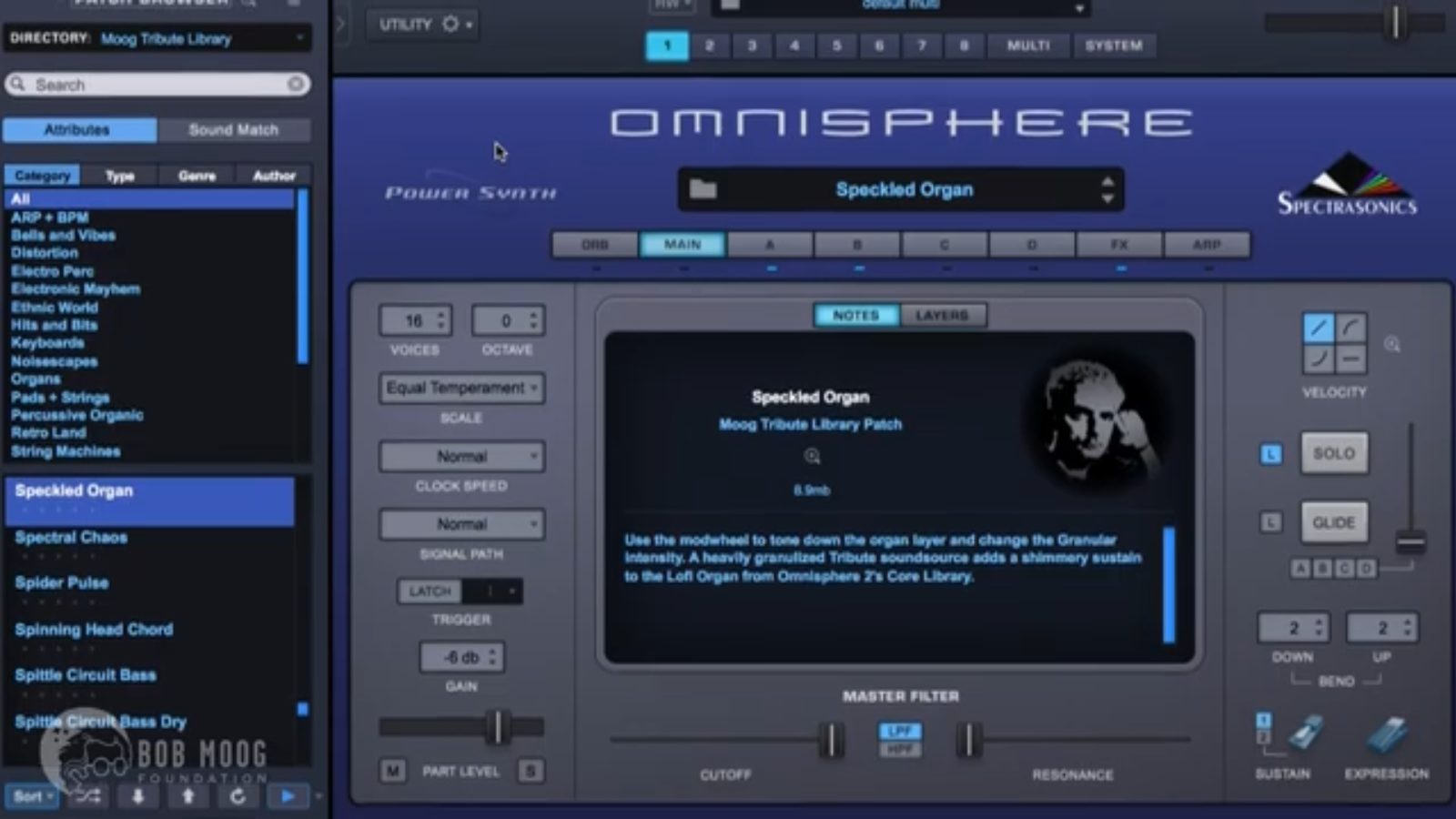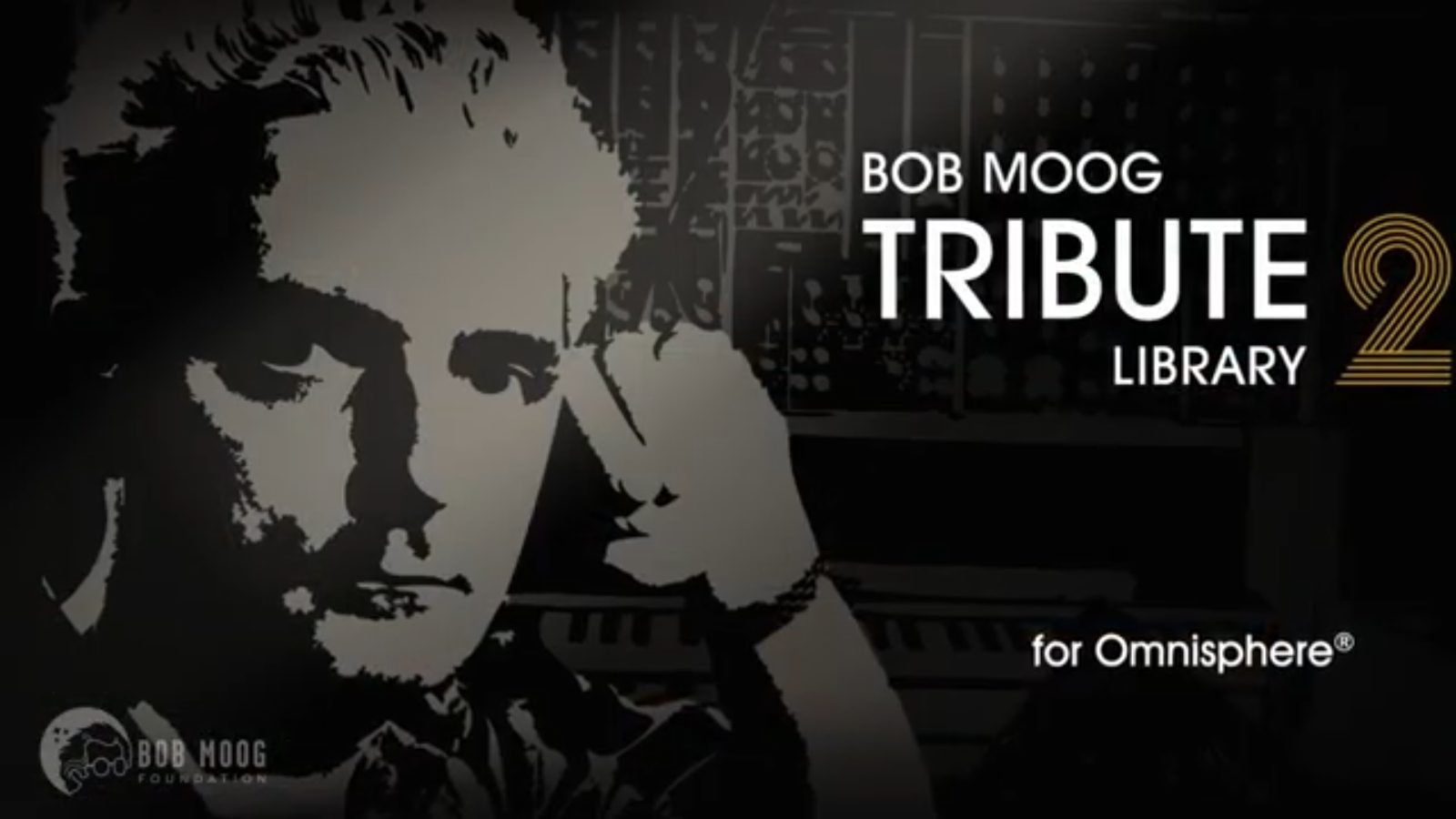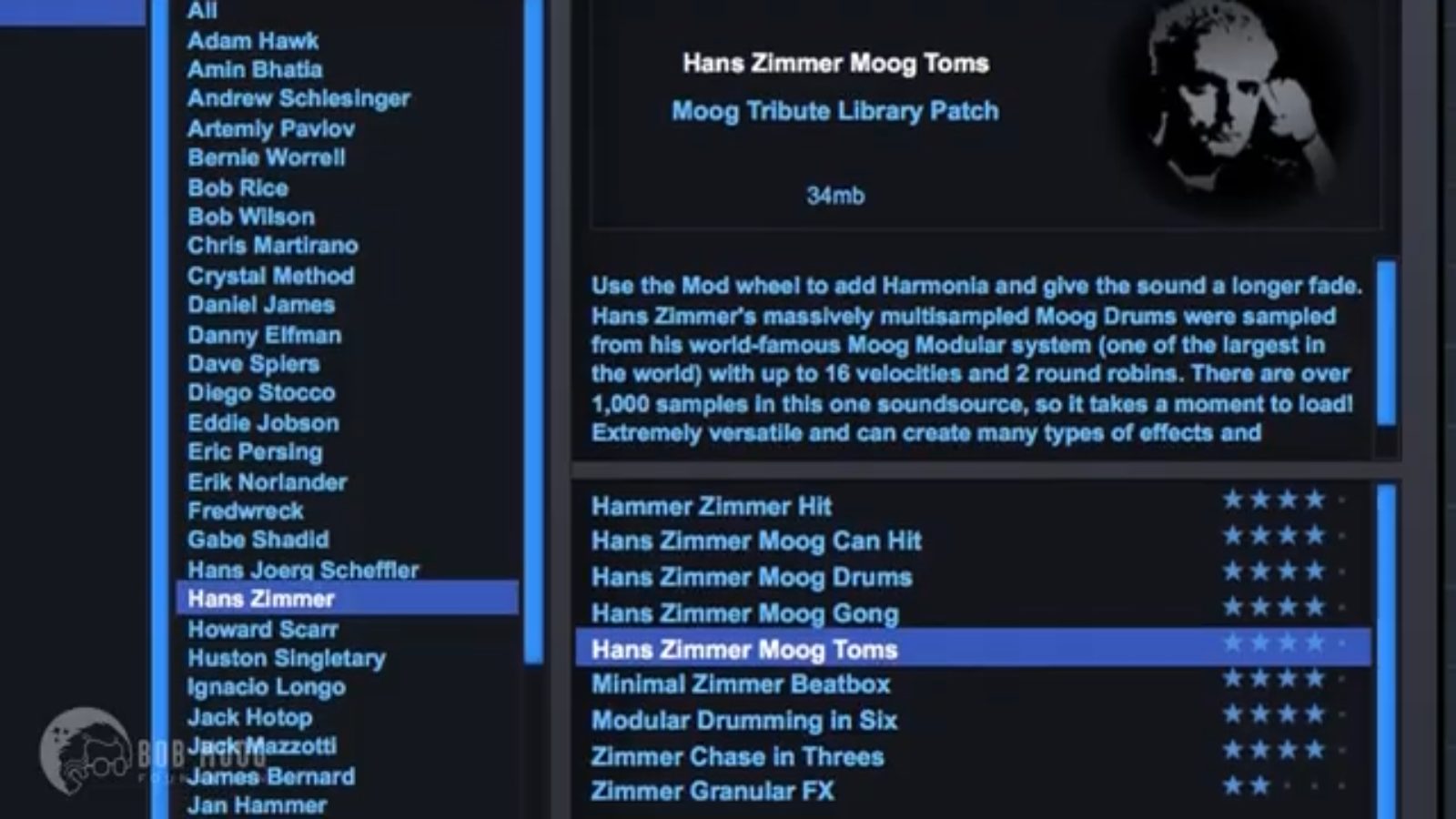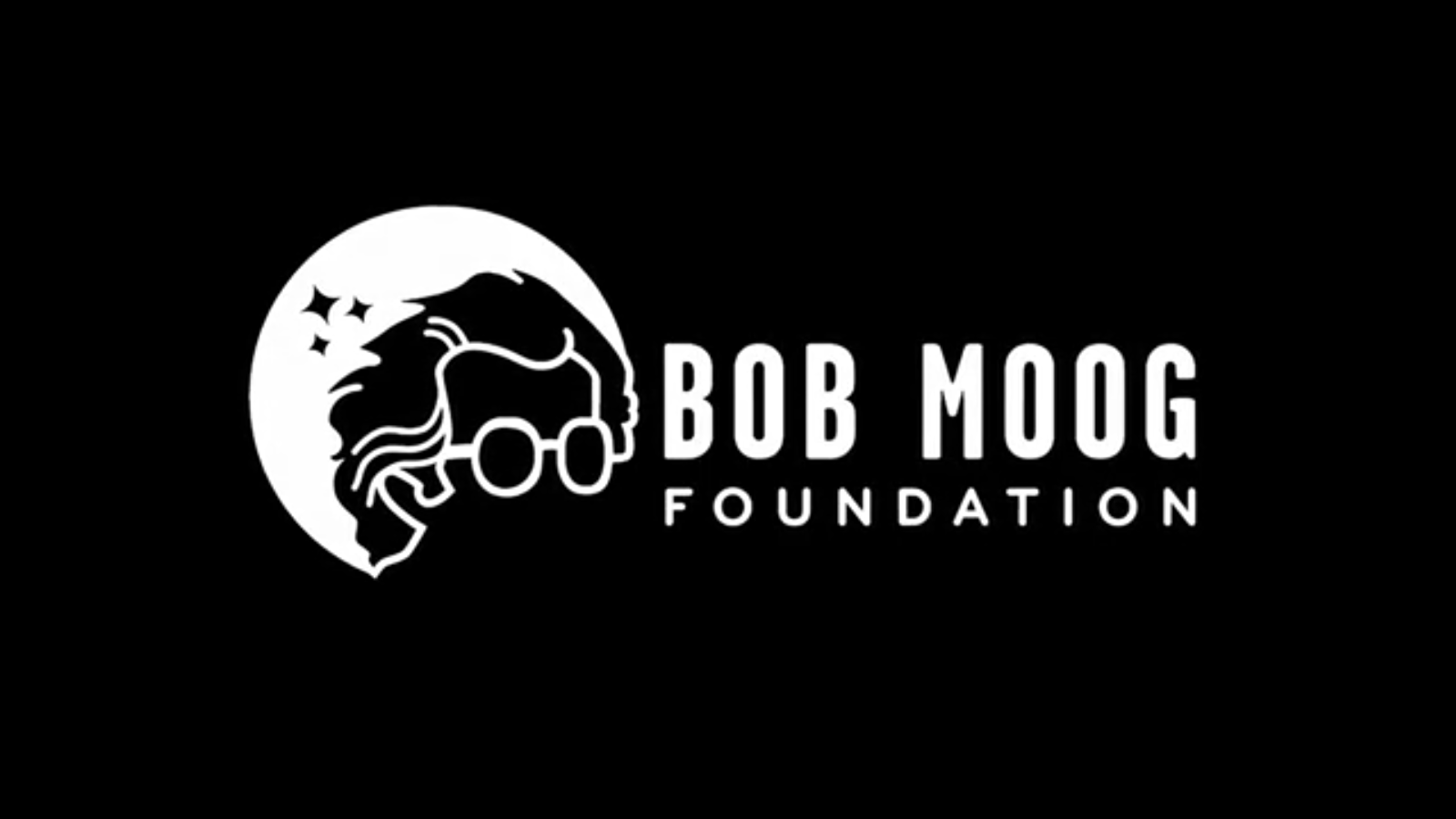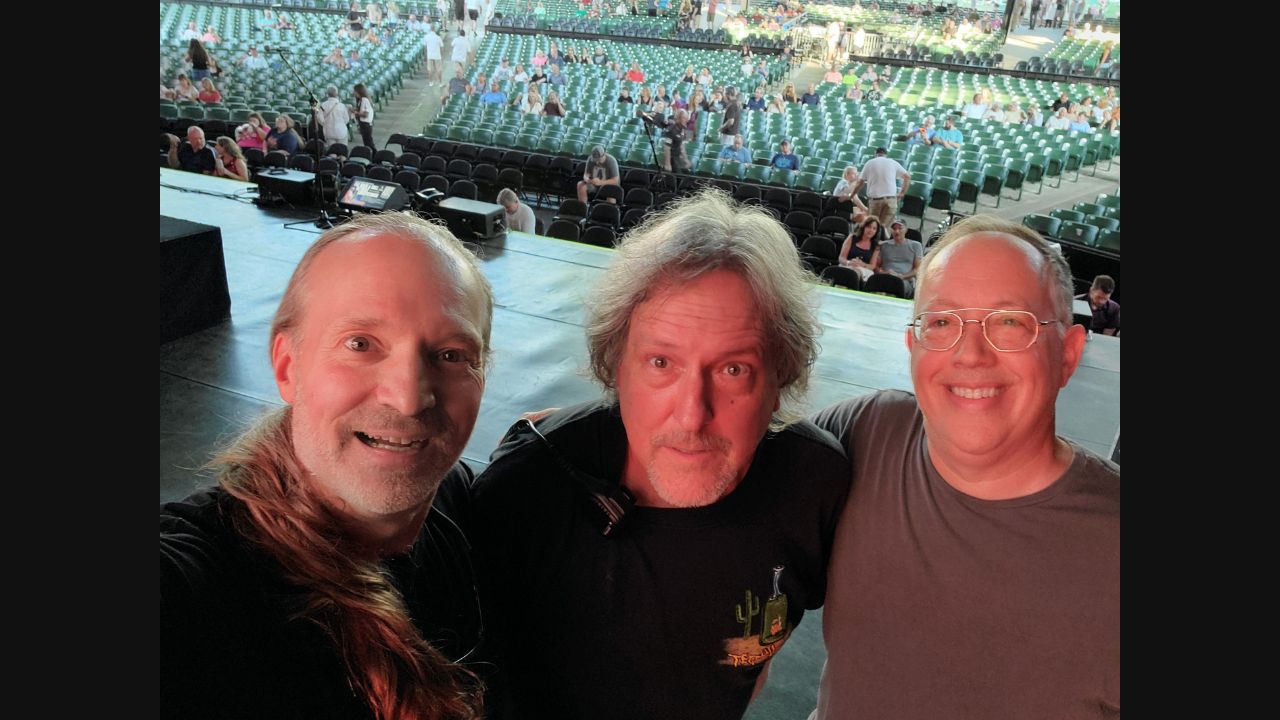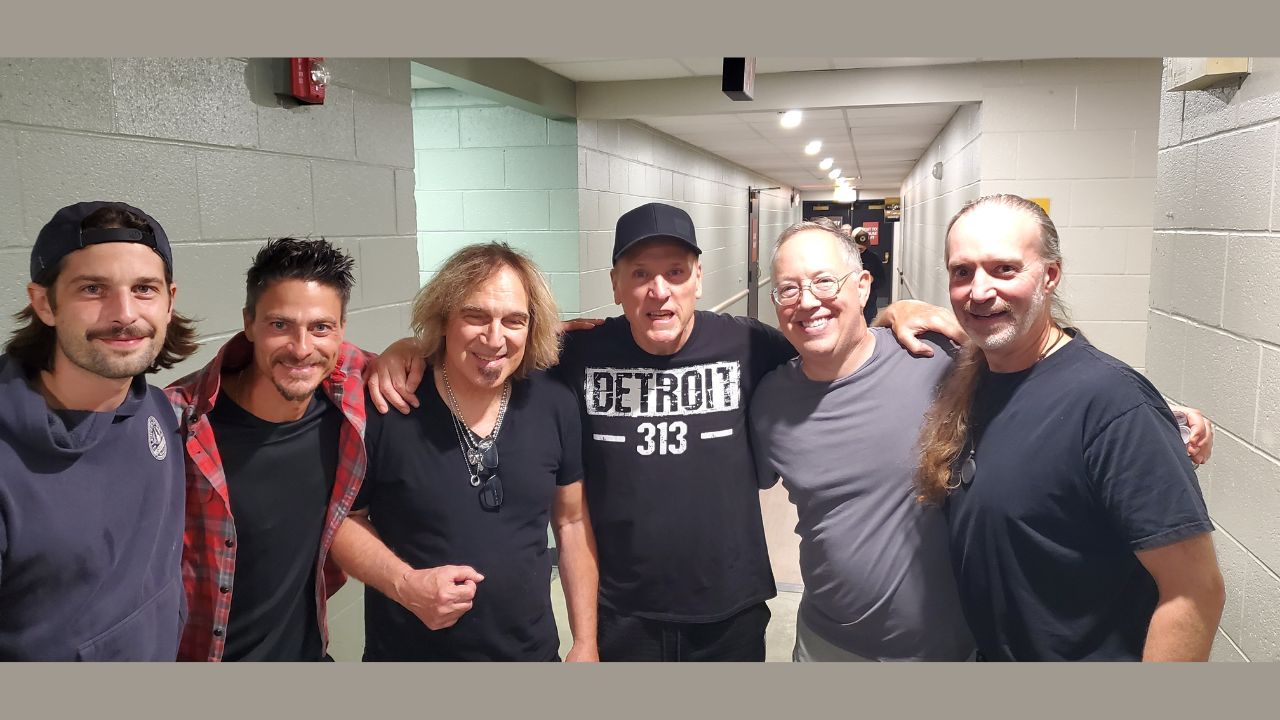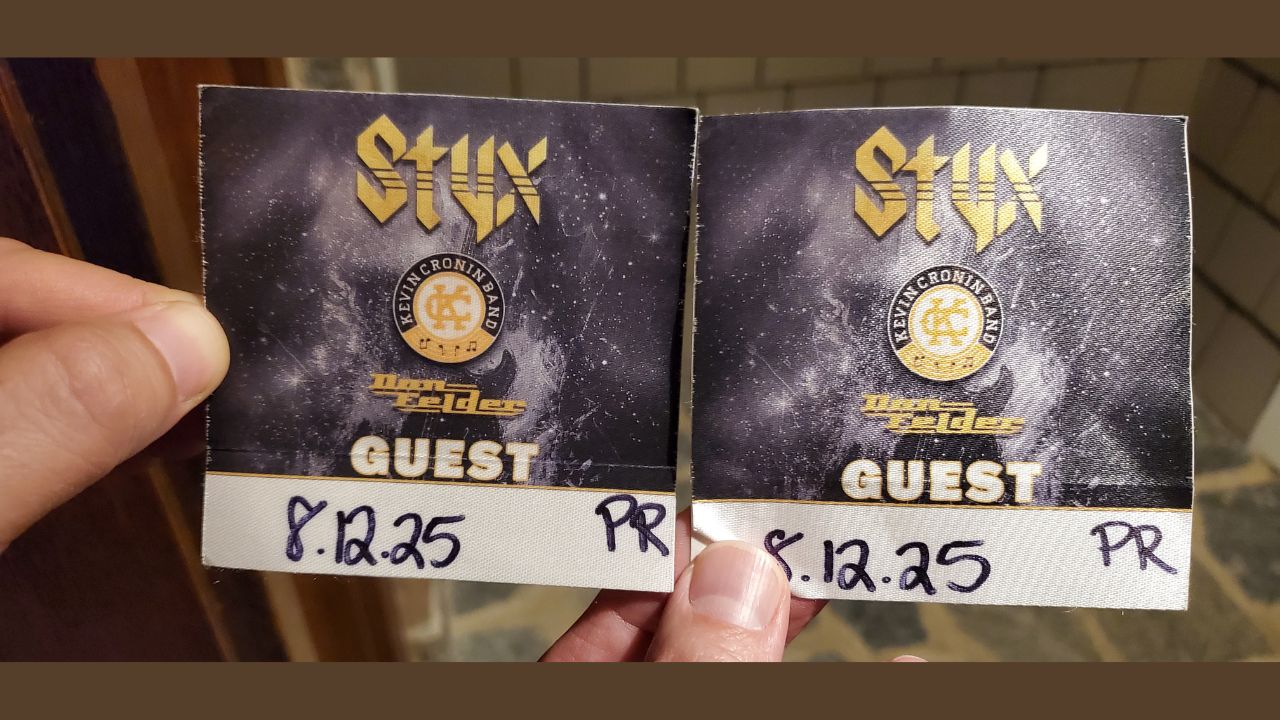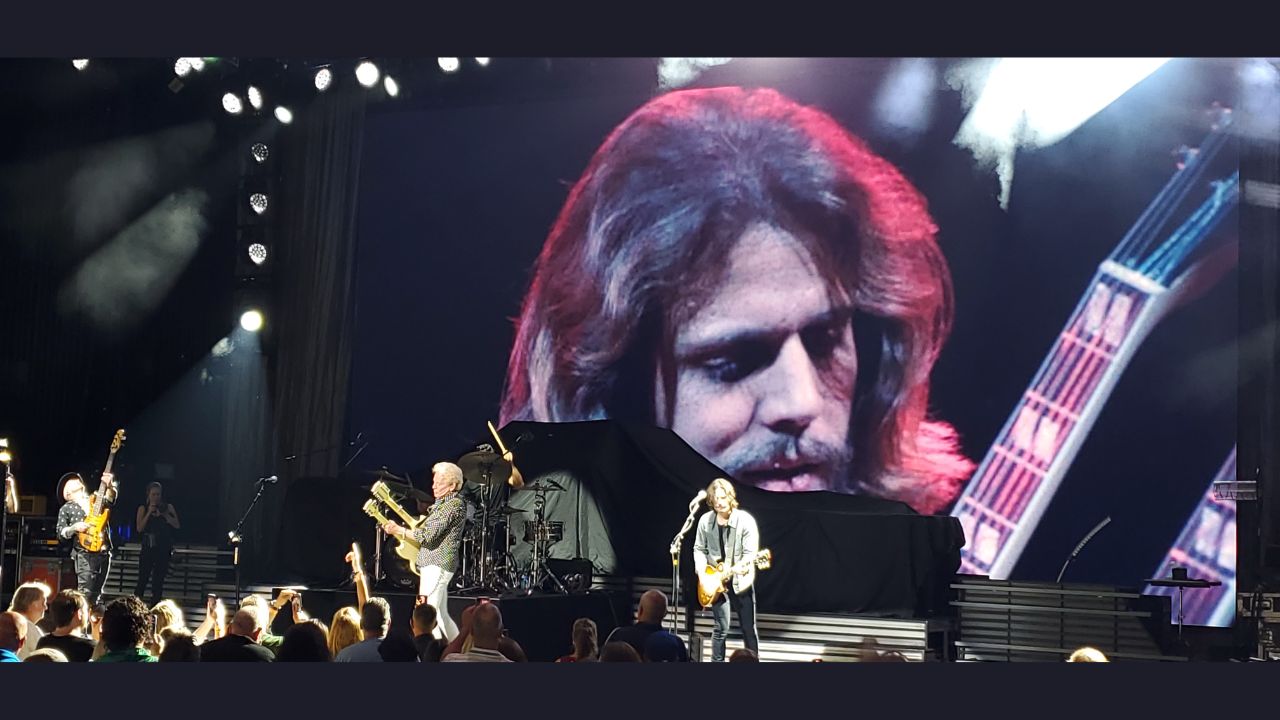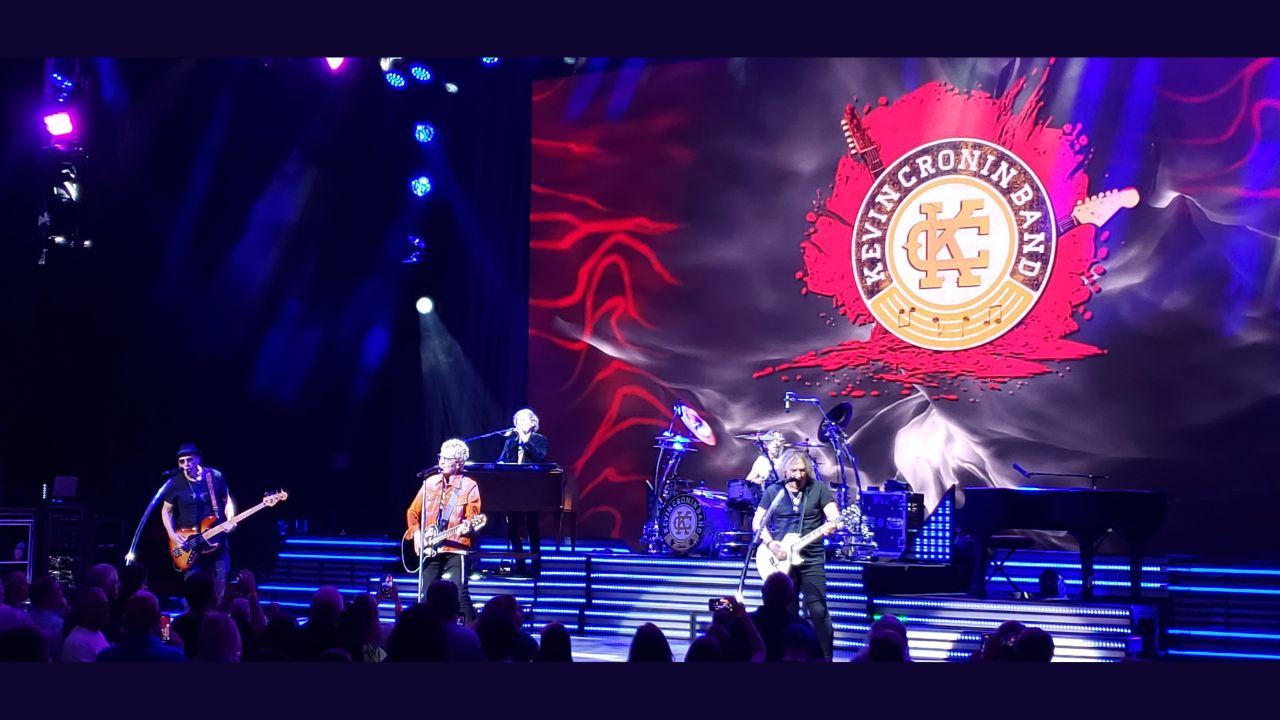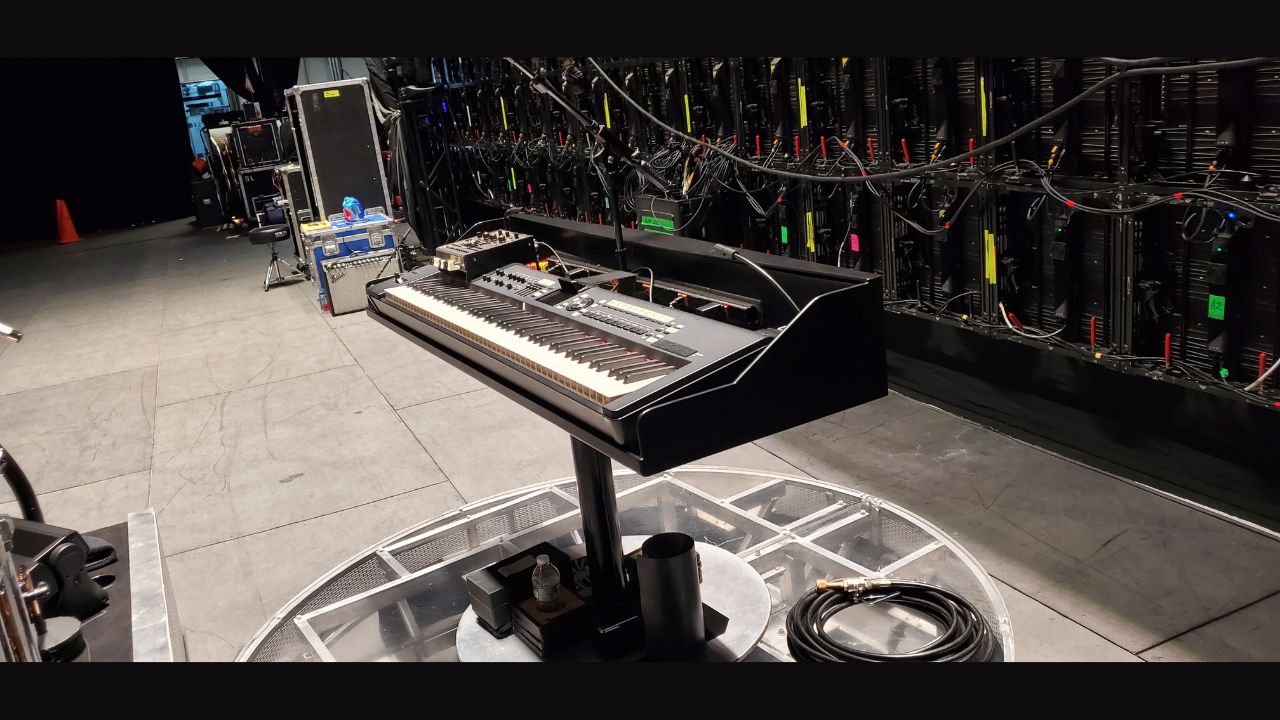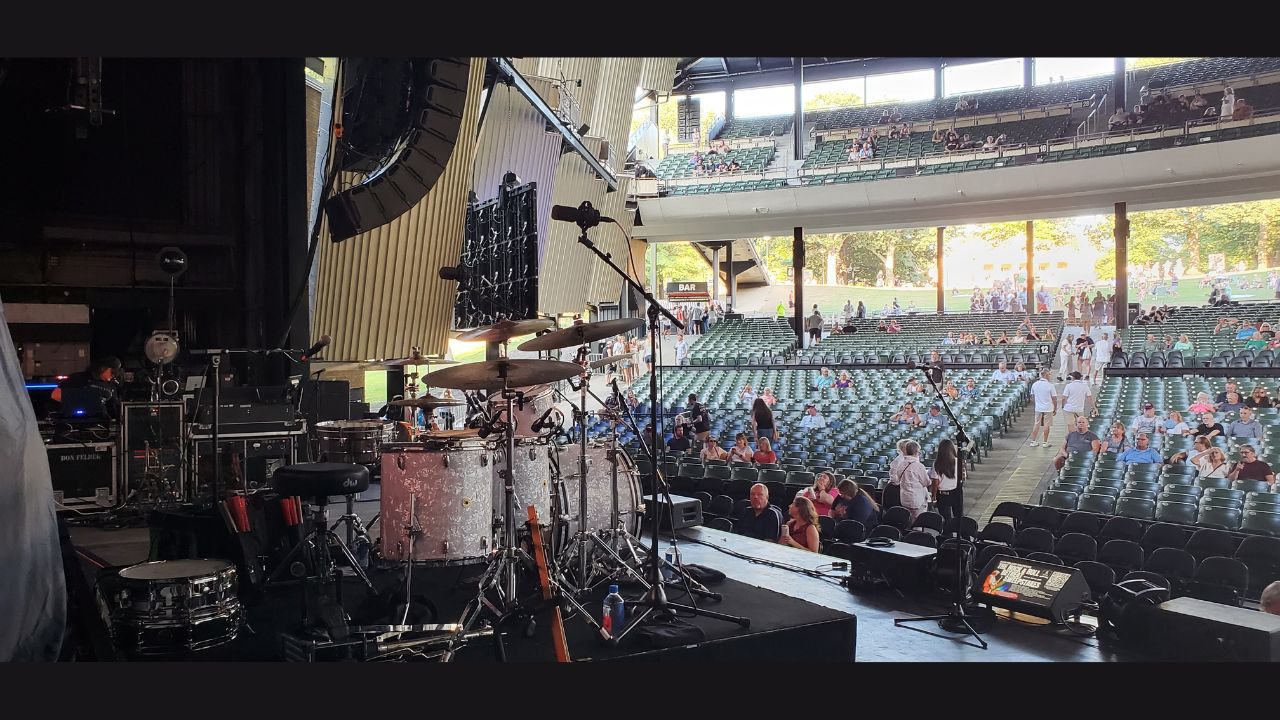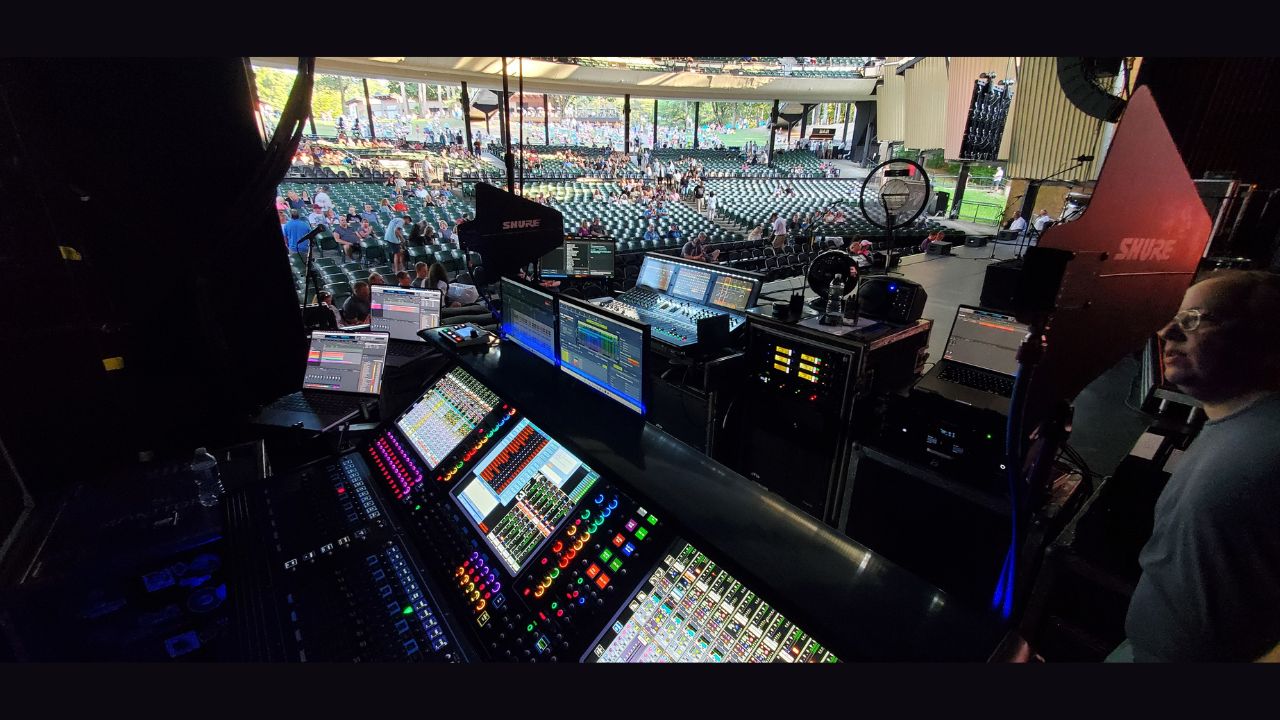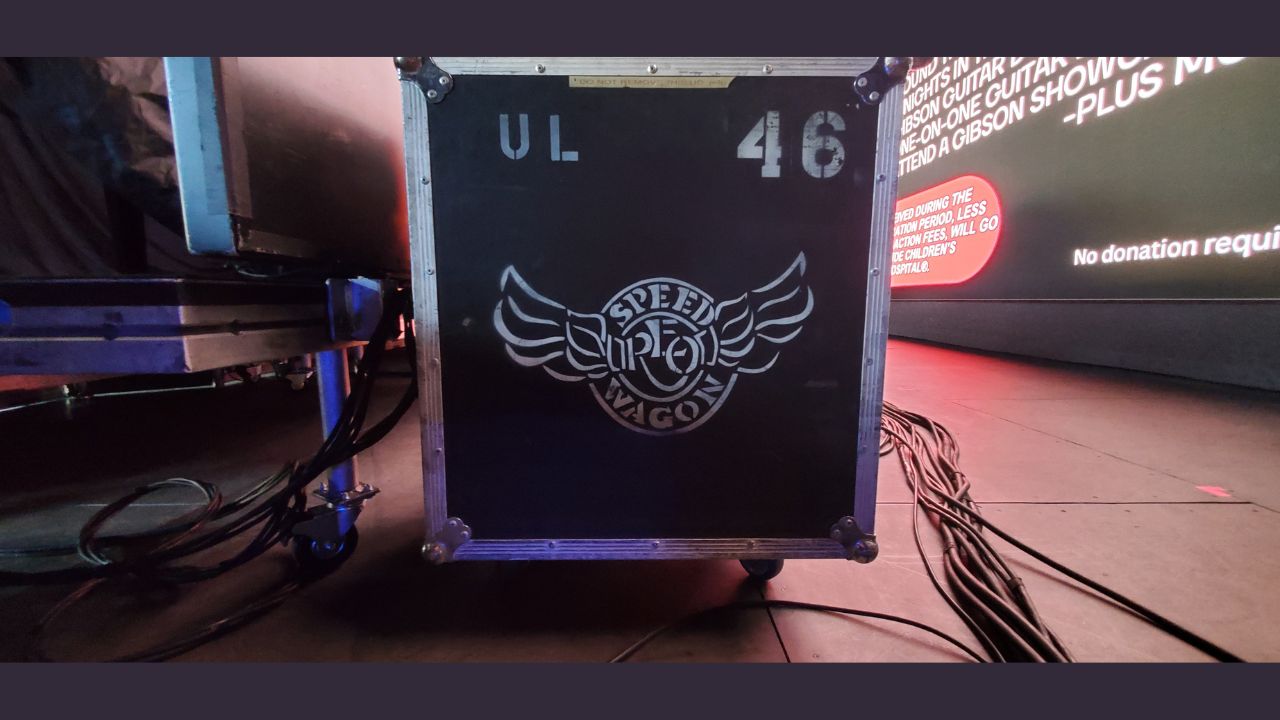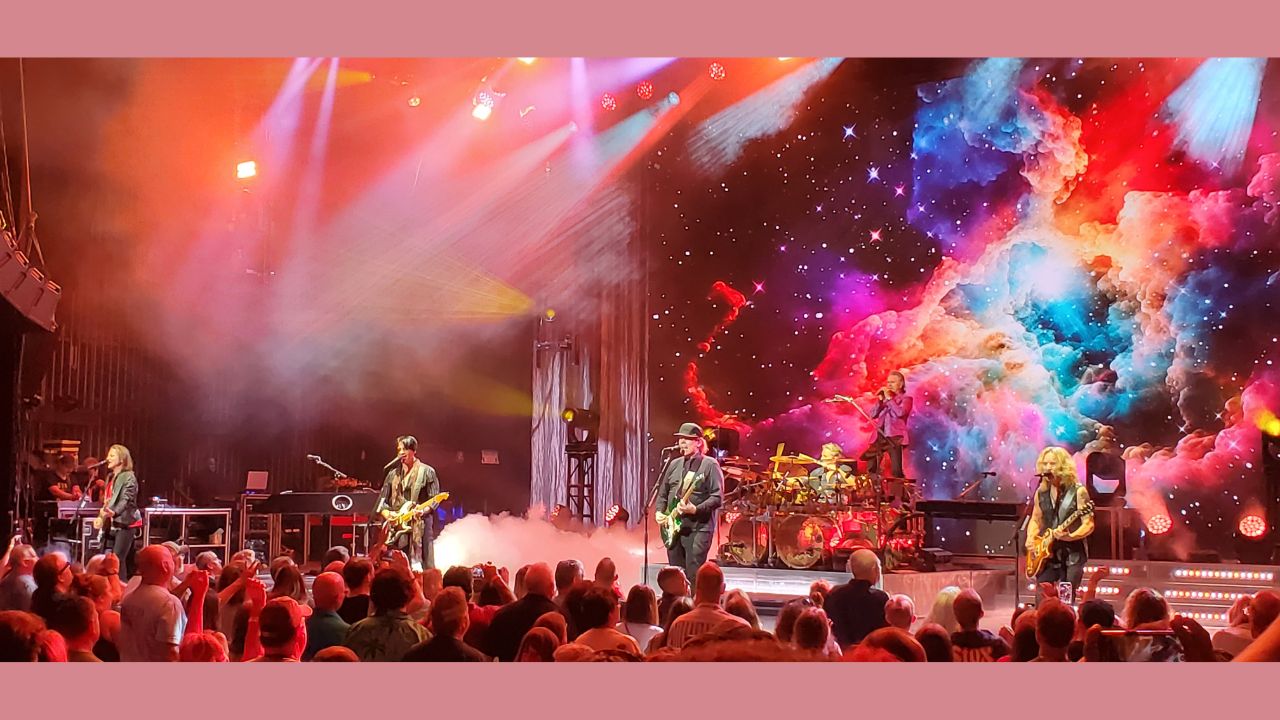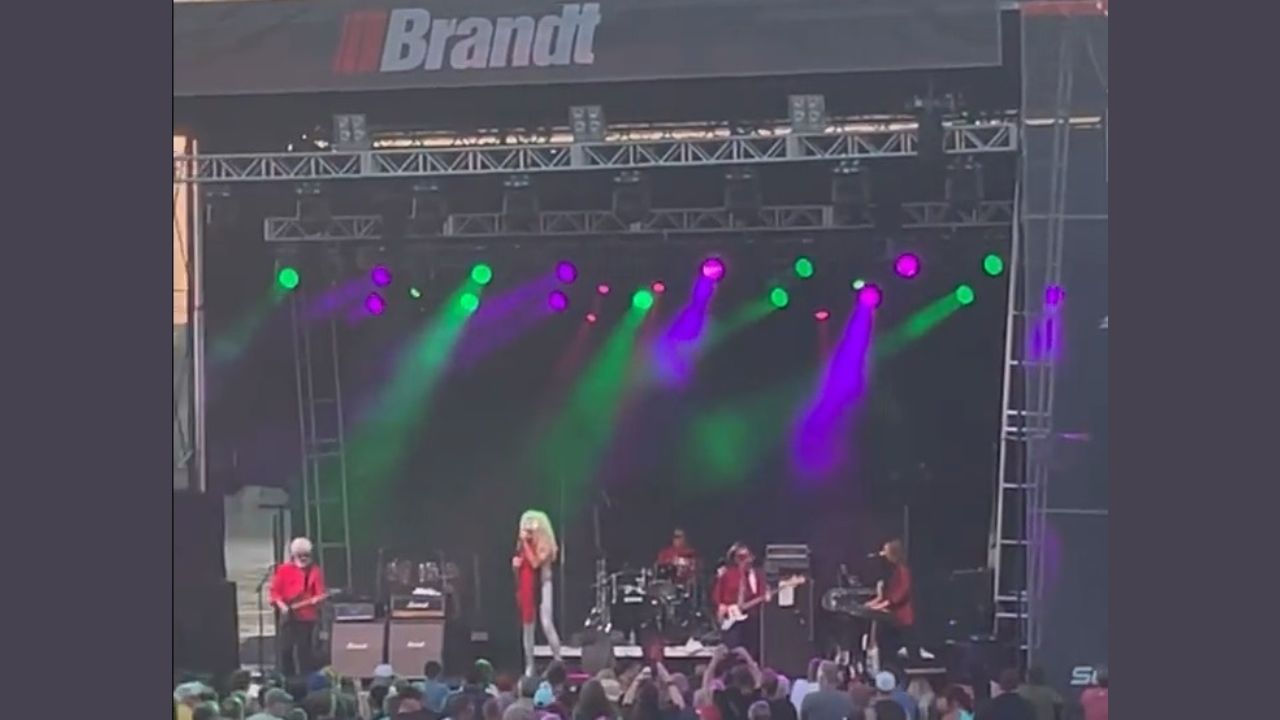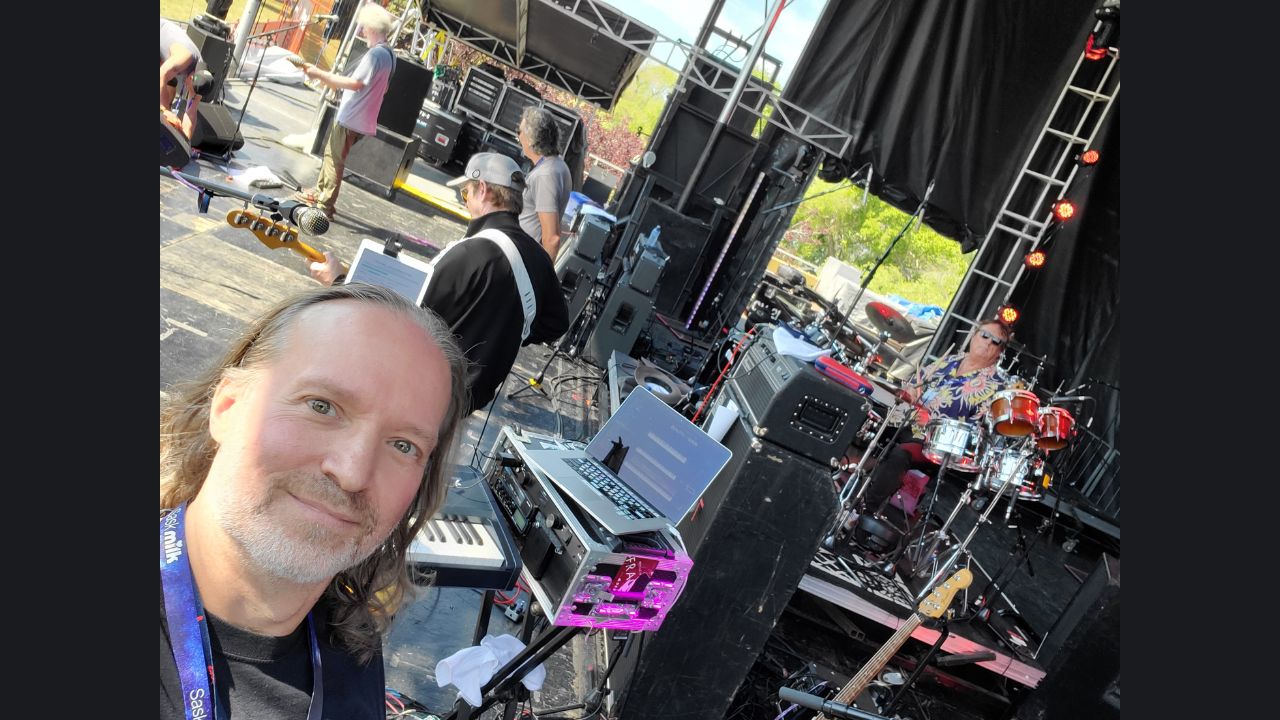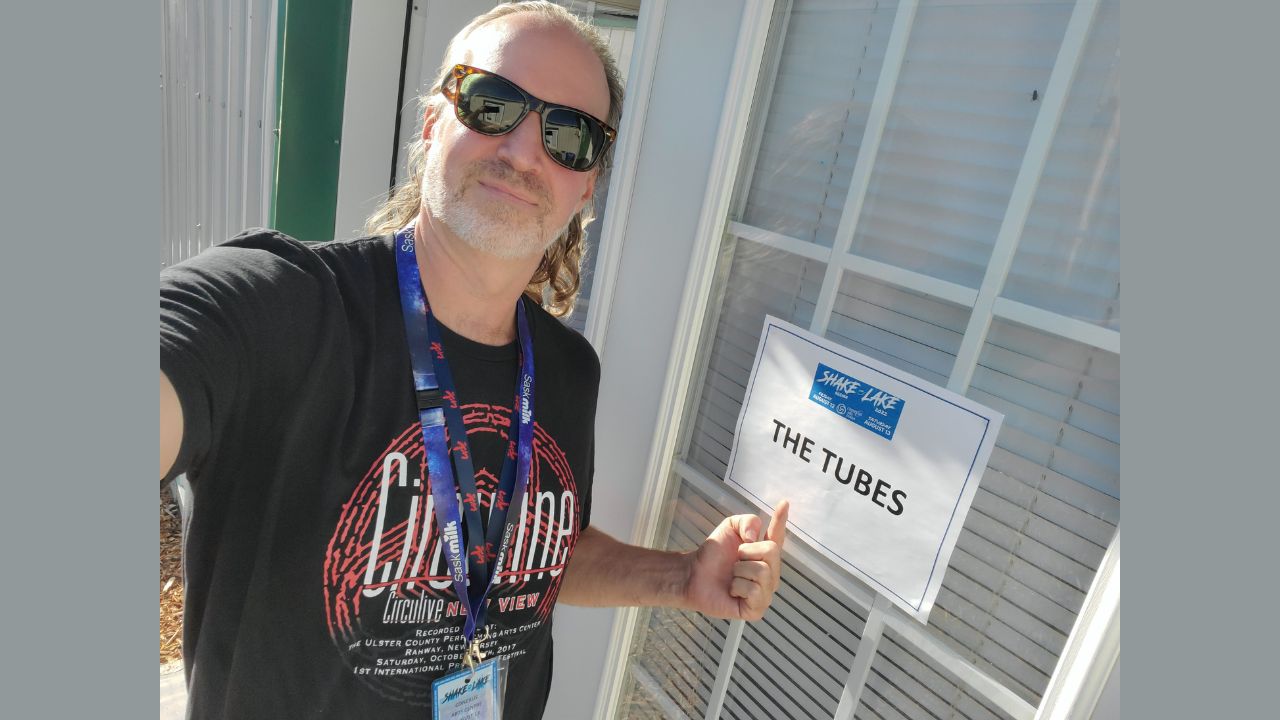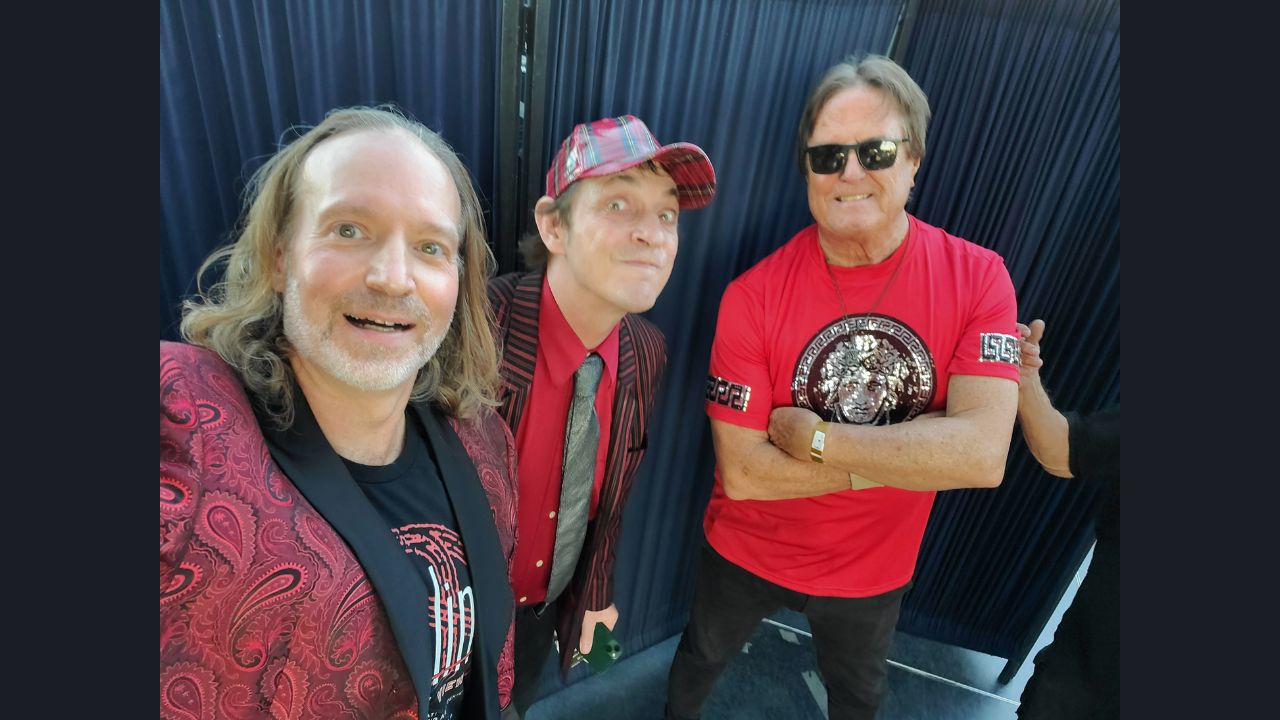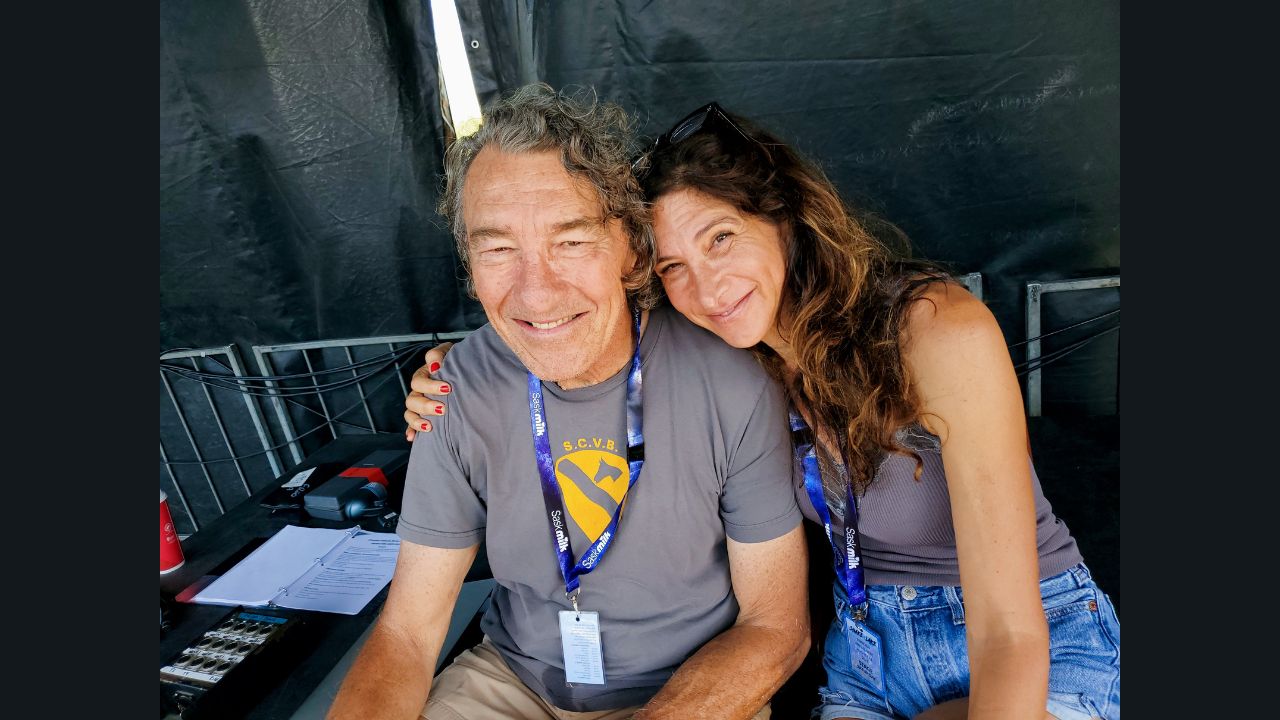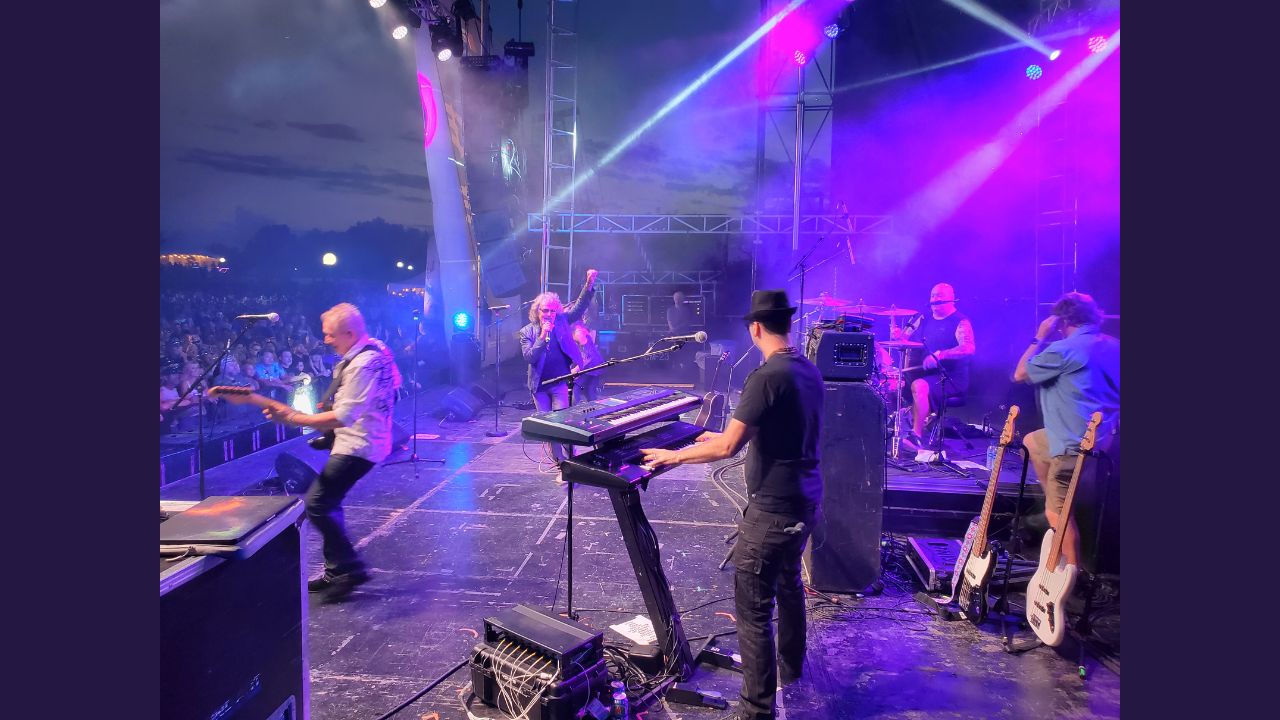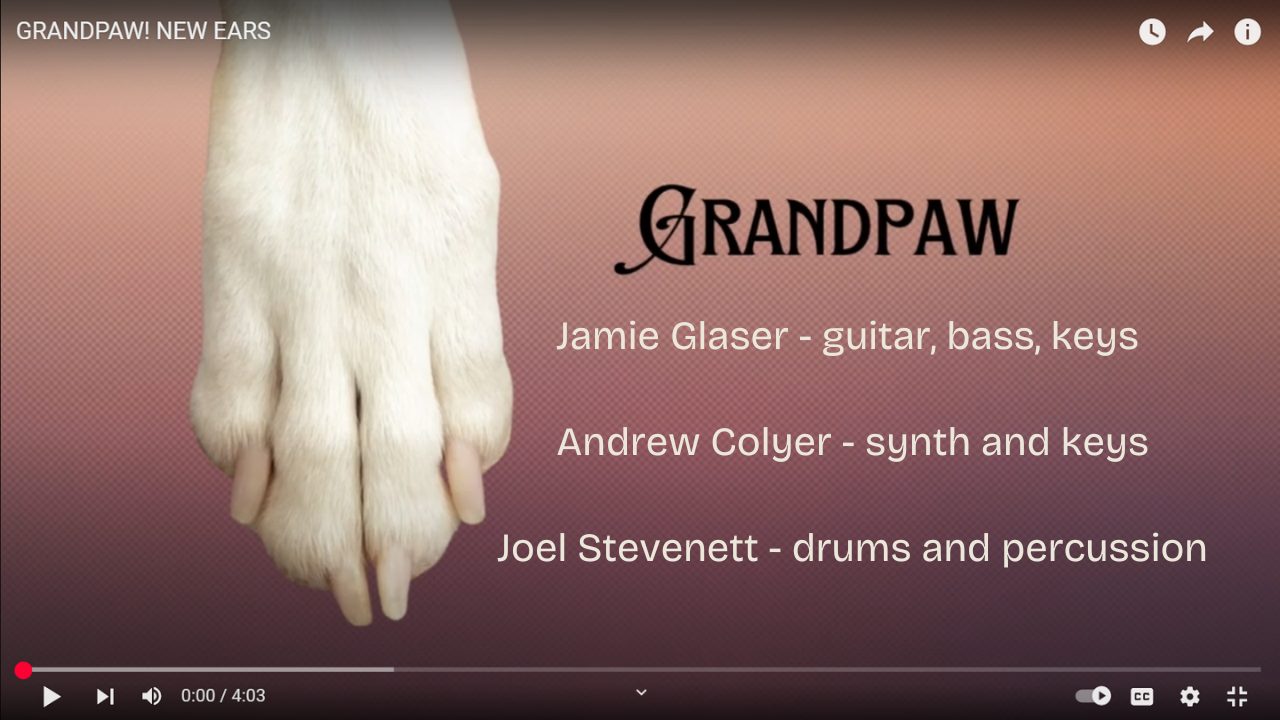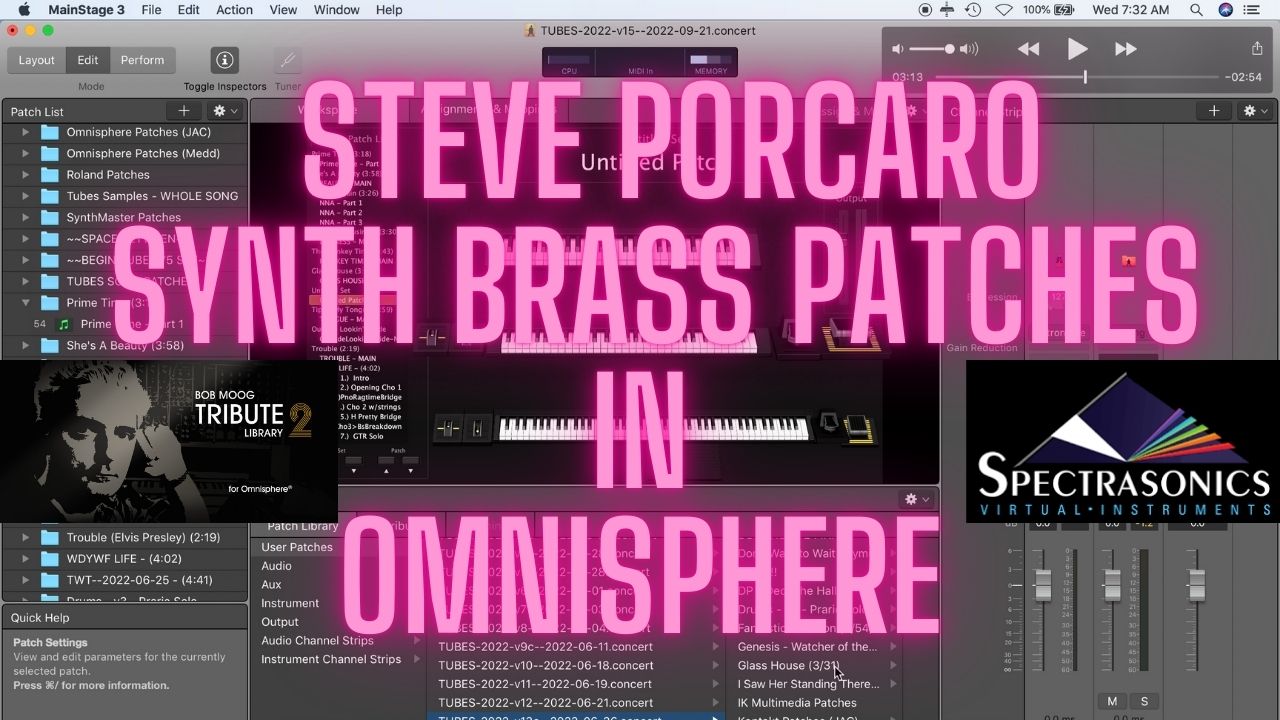News
Explore Spectrasonics’ Bob Moog Tribute Library v2 for Omnisphere with Andrew Colyer – Part 4
I had so much fun helping to create these new videos for The Bob Moog Foundation, showing you all of the cool features of the Spectrasonics Bob Moog Tribute Library for Omnisphere! The collaboration team has included Michelle Moog-Koussa, Daniel Liston Keller, Paul Lewis Anderson, Eric Persing, and Mark Hiskey. Here’s the FOURTH in the series – now available on YouTube and Facebook, on the Moog Foundation Channel. –
https://youtu.be/YUo1TMVRUFY?si=JJcVXxEexXdMylxo
~
@moogsynthesizers @bobmoogfoundation @ilio_official @spectrasonics_official @daniellistonkeller @paullewisanderson @ericpersingmusic @markhiskey
#ColyerMusic #moog #bobmoogfoundation #moogfoundation #spectrasonics #omnisphere #omnisphere2 #spectrasonicsomnisphere #spectrasonicsomnisphere2 #ilio #bobmoogtribute #bobmoogtributelibrary
Backstage with Styx / REO Speedwagon / Don Felder (Eagles)
Andrew Colyer with The Tubes at Shake the Lake Festival
I met Dave Medd in 2011 after one of Robert Berry’s December People shows, thanks to Ron Matthews. Dave and I hit it off immediately, and in January 2012, he asked me to be his sub on keys/vocals with The Tubes.
In 2022, they finally needed me. I flew to Canada for one of those huge outdoor festivals, something like 6,000 people. And due to logistics, there would be NO REHEARSAL. Just walk onstage and do the show. So I practiced and prepared as best as possible at home in The Cave, making charts and transcribing parts, so that when I got onstage I could just focus on locking in with them and performing the music – playing and singing.
Soundcheck was in the morning, and when we came back to to play in the afternoon, the amazing Canadian band PRISM was playing, and we were the 7 pm slot before for the final headliner STARSHIP featuring Mickey Thomas.
Guess what? In August, where is the sun at that time of day? GOING DOWN ON THE HORIZON, STRAIGHT AHEAD BLINDING ME ONSTAGE. So I walk onstage, with no rehearsal, to play in front of thousands of people, AND I CAN’T SEE !! I just kept squinting and staring at Prairie, and luckily the rapidly setting sun was soon out of my eyes.
The show went pretty well, and afterwards since it was a festival, the crowd didn’t know whether or not to keep clapping for on encore or not. Roger Steen told me to go out and start playing something, so they would know there was an encore. It worked! The people went crazy, the band came back out, and we finished off the show with a bang. Somewhere I have a recording of that, which I’ll find and put on YouTube.
That gig led to other gigs…..more to come. 😀🎹🎵💥
Explore Spectrasonics’ Bob Moog Tribute Library v2 for Omnisphere with Andrew Colyer – Part 3
I had so much fun helping to create these new videos for The Bob Moog Foundation, showing you all of the cool features of the Spectrasonics Bob Moog Tribute Library for Omnisphere! The collaboration team has included Michelle Moog-Koussa, Daniel Liston Keller, Paul Lewis Anderson, Eric Persing, and Mark Hiskey. Here’s the THIRD in the series – now available on YouTube and Facebook, on the Moog Foundation Channel. –
https://youtu.be/1ZqvLdK0Pvg?si=832i3bgWGH6ZIGQc
~
@moogsynthesizers @bobmoogfoundation @ilio_official @spectrasonics_official @daniellistonkeller @paullewisanderson @ericpersingmusic @markhiskey
#ColyerMusic #moog #bobmoogfoundation #moogfoundation #spectrasonics #omnisphere #omnisphere2 #spectrasonicsomnisphere #spectrasonicsomnisphere2 #ilio #bobmoogtribute #bobmoogtributelibrary
Jamie Glaser’s GRANDPAW – “New Ears” Single Release with Andrew Colyer
Announcing Jamie Glaser’s new band GRANDPAW, and the digital single and video “New Ears”. Jamie Glaser is a world-class composer, arranger, and guitarist, who has worked with artists such as Jean Luc Ponty, Bryan Adams, Lenny White, Eric Burdon, Chick Corea, and Manhattan Transfer, just to name a few. You’ve also heard Jamie’s compositions and guitar playing on Seinfeld, Disney Moves, ESPN, the Super Bowl, and more.
Jamie and I are joined on this track by amazing drummer and percussionist Joel Stevenett, whose work can be heard on ESPN FIFA WORLD CUP SOCCER, The NBA Theme, over 60 PLAYSTATION, X-BOX, NINTENDO Wii Video Games, including TOY STORY 3, TWISTED METAL!
Thank you so much Jamie Glaser, for asking me to be a part of this single!
Here’s the YouTube video single:
Best Synth Brass Patches in Omnisphere
The Bob Moog Tribute Library for Omnisphere has some amazing synth brass patches! Toto keyboardist and synth programmer Steve Porcaro created and donated some custom patches for this Library, which I demoed again in the ILIO/Spectrasonics booth at this year’s NAMM show. My colleague Geoffrey stopped by the booth, and was blown away by the patches! Geoffrey asked if I would remind him of some of the patches that I demoed for him. These were the first ones that I remembered. Enjoy!
Explore Spectrasonics’ Bob Moog Tribute Library v2 for Omnisphere with Andrew Colyer – Part 2
I had so much fun helping to create these new videos for The Bob Moog Foundation, showing you all of the cool features of the Spectrasonics Bob Moog Tribute Library for Omnisphere! The collaboration team has included Michelle Moog-Koussa, Daniel Liston Keller, Paul Lewis Anderson, Eric Persing, and Mark Hiskey. Here’s the SECOND in the series – now available on YouTube and Facebook, on the Moog Foundation Channel. – https://www.youtube.com/watch?v=KnSKpCqwYVo
~
@moogsynthesizers @bobmoogfoundation @ilio_official @spectrasonics_official @daniellistonkeller @paullewisanderson @ericpersingmusic @markhiskey
#ColyerMusic #moog #bobmoogfoundation #moogfoundation #spectrasonics #omnisphere #omnisphere2 #spectrasonicsomnisphere #spectrasonicsomnisphere2 #ilio #bobmoogtribute #bobmoogtributelibrary
The Wisdom of Hal Galper – Proverbs, Imitation, Assimilation, and Innovation
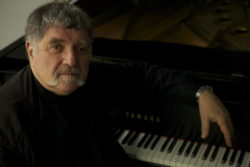
Harold Galper (born April 18, 1938) is an American jazz pianist, composer, arranger, bandleader, educator, and writer. In the 1980’s, I had the good fortune to play with Clark Terry (referenced below).
This article from Hal’s Facebook page is so good, I want anyone who aspires to be a great player to see this. So I’m sharing it here for posterity.
The link to the original post is at the bottom of this page.
~
2
Jazz Proverbs as Embodied Knowledge
Webster’s Dictionary defines a “proverb” as a ” maxim of wisdom… An allegorical saying of the wise that requires interpretation. The roots of jazz are firmly planted in the oral tradition of African music, a tradition the Masters of the music used to efficiently pass musical wisdom down to succeeding generations of apprentices. This wisdom is difficult to record in written form. Jazz proverbs are ubiquitous throughout the history of jazz. The Masters never explain proverbs. They want you to figure it out your own way. It’s the nature of these proverbs that one may, or may not, gain a complete understanding of their meaning for decades. As they are designed to be individualized, the interpretations herein are solely the results of my reflections, not intended for use by others. The only good ones are your own.
At first, these proverbs appear one dimensional. Enlightenment comes only after extensive reflection, self-analysis and the requisite experience and knowledge to relate to the proverb. Jazz proverbs are powerful. Functioning on a conceptual level, they have the effect of changing inappropriate emotional and physical actions, mental states, attitudes, conceptions and perceptions, the way you think and feel about yourself, the music and your relationships to your instrument, practice, performance and other players.
“Learn it then forget it.” Charlie Parker
What Bird doesn’t mention is it’s going to happen many times during your career. It’s an on-going process. Musical growth doesn’t happen in a smoothly ascending curve but in stages. There’s too much to learn and never enough time to learn it all. There will always be learning gaps within each stage of your self-education. You don’t find this out until you run into a particular problem, a problem you didn’t know you had but have been sensing it for a while. Something wasn’t “quite right” but you couldn’t quite figure out what it is. The answer will always be in the history and traditions of the music, and you’ll have to go back to the tradition to try to figure out what it was you missed, otherwise you won’t get to the next stage. You’ll have to do a lot of research at each stage of the learning process and devise efficient practice regimens crafted specifically for each solution. There are as many ways to practice as there are people practicing. The way you organize your practicing will have a major effect on how you’ll eventually sound. Because the learning process never stops, you’ll need to develop efficient research strategies you’ll use for the rest of your life. Once you’ve figured out the solution, or part of one, you’ll have to “learn and forget it.”
“Forget it,” describes the process of trusting the intuitional training and instincts you’ve been refining for years. It’s not really forgetting as the brain retains every bit of experience. To me, it meant “stop thinking about what you practiced.” It’s difficult to put aside everything you worked so hard on and natural to want to enjoy the fruits of one’s labors, but playing what you practiced are gross rewards, mere self-gratification. The compulsion to self-evaluate yourself while playing is the same, a manifestation of Ego, the greatest impediment to accessing “The Zone” from whence all creativity springs. Bird was advising us to forget thinking and trust your trained instincts to do the job. I’ll be explaining more about “The Zone” in detail in a separate essay.
I’ve been through many of these “learn and forget” stages over the decades. It took me 15 years to “learn and forget” how to play Pentatonics. In 1963 there weren’t any books published on the theory and McCoy and Coltrane weren’t telling. I had to figure out the theory myself. Don’t know if it was the theory Trane and McCoy used but it was my theory. It wasn’t until 1978 I’d figured out all the theory’s elements, filling two practice books with my own exercises and could “forget it.”
“Imitate, Assimilate, Innovate.” Clark Terry.
Imitate
“Imitation is an advanced behavior whereby an individual observes and replicates another’s behavior.” Wikipedia (edits mine).
No jazz musician knows how they want to play in the beginning. It’s an on-going process of self-discovery in which the “process” of learning is given greater weight than the goal. When someone’s playing strikes you on an intuitive level you’re having a “I want to play like that!” moment. A resonance has occurred between you and the player, attracting you that sound. You may think you want to imitate that sound, “to play like that,” but in essence, the artist is trying to tell you something about how you want to play, not how to play like them. The process of selectivity comes from within, not from without.
Selecting a model is the first step to building your musical identity. Some select only one model as their guide, other’s select a series of models. No two people hear the same way; therefore, no one can exactly copy how someone else plays. It will always be your own version of a model’s playing.
I chose a series of models because I wanted to play everything, I heard everybody else play. Starting with short-term models Dave Brubeck, then John Lewis, I next discovered Red Garland. It was a “I want to play like that,” moment and embarked on a long-term study of his playing. I was still a student at Berklee when transcriptions were not as ubiquitous as they are now. My ears weren’t good enough to transcribe myself at that stage. Luckily, a grand gentleman, Harry Smith, who mostly played piano for vocalists, could read anything and had perfect pitch, was on the faculty. You could ask Harry to transcribe any solo and in two weeks later he’d hand you the transcription written in an almost perfect hand. Clutched in my grubby hands, I rushed back to my room with my Red Garland transcriptions to play Red’s solo, but it didn’t sound like him. Harry had also copied out some of Red’s voicings, but they also didn’t sound like Red’s when I played them. Though somewhat chagrined, I got a valuable lesson out of the experience. I realized how important touch would be a factor in deciding how and what I wanted to play. Some things will sound good under my hands, and some won’t. It wasn’t until many years later that I came to understand that touch and tone were the priority, at the top of the list. I expect this would also ring true for any instrumentalist as well.
I was fortunate to have apprenticed with many great masters, most of whom played completely by ear and knew no theory. They learned how to play by copying their masters. They didn’t “know” the “rules” of music in an intellectual sense. If, as Miles Davis suggested, you “only copy from the best” you’ll learn the rules of music and “know” what you’re doing on an intuitive level, by ear. As in Miles’s advice: if it sounds good the rules were used correctly. If you copy good sounds you’re learning the rules of music by ear.
A great example of effective copying is, in the last half of the wonderful documentary “The Jazz Loft.” The film shows Monk and Hall Overton developing the music for Monk’s historic Town Hall concert. Monk is showing Hall his voicings as he writes them down. During a break in the rehearsal, everyone got up and hit the bar downstairs. Monk noticed the classically trained French Horn player still sitting in his seat. Sensing he was having some difficulty with the rhythms, Monk walked over to an empty corner of the room and tap danced the rhythms of the French horn part. The horn player had no trouble with his part after that.
During my early days as a Berklee student, 905 Boylston St. was situated directly behind the school which was then situated on the corner of Fairfield and Newbury streets. 905 was a five story SRO populated by fledgling students who could just manage the $25 per month to rent a room, some of which had upright pianos. We were all broke, so we often shared money for food sometimes helped one another with their rent. When someone got a new Miles album, a bunch of us would jam ourselves into a room and play it over and over, the whole room singing every solo until memorized. We’d then retire to our own rooms to play the solos. If you read interviews of how the masters learned to play, they’d often mention copying from radio broadcasts, records and when possible, they’d memorize salient ideas from live performances, rushing home to try them out.
Assimilate
There are no discrete divisions between “Imitate, Assimilate, then Innovate” or for that matter, any other processes and techniques we employ to teach ourselves how to play jazz. They blend into each other having the elements of each in common. Complex Adaptive Systems has increased our understanding of how the brain processes information, i.e. all information is shared throughout the brain, therefore, all change is global.
The term “Internalization” is in common usage, but it doesn’t mean the same thing as assimilation. According to Wikipedia (edits mine), “internalization describes the psychological outcome of a conscious mind reasoning about a specific subject; the subject is internalized, and the consideration of the subject is internal. Internalization is directly associated with learning within an organism and recalling what has been learned.”
The word “recalling,” without the word “memorization” wouldn’t make any sense. The only way one could recall something is if were memorized. I think we could reasonably entertain the idea internalization also means memorization. To be sure, the process of memorization is an integral element of the learning process, but it is not assimilation.
Internalization and assimilation both have their place in the learning process. The latter cannot be achieved without the former. The difference between internalization and assimilation is the former is conscious, and the latter is unconscious!
Billy Taylor describes, in his book “Jazz Piano, A Jazz History” the “cutting sessions” in New York City in the 30’s and 40’s. “In an informal setting, creative musicians could exchange ideas, experiment, test one another, and bear witness to the ingenuity of the “special” players among them. There are legends about music contest between giants: but not enough was heard about the other side of the coin, the educational component — what the creative individual gained from spontaneous exchanges with his or her peers, as well as older and younger musicians.”
Cutting sessions instilled a healthy competitive spirit of comradery among their attendees. If you were challenged to a duel, you had to accept, or you’d never be invited back. The pressure would be intense. Under stress, your brain pumps out epinephrine, one of the family of adrenalines. Doctors, treating Afghan War returnees with Post Traumatic Stress Syndrome, discovered epinephrine bonded emotional trauma to traumatic experience. Administering a beta blocker could eliminate the effect of the epinephrine, separating the emotional content from the experience allowing their patients to talk freely about their experiences. If epinephrine bonds emotion to experience, then the epinephrine released under the pressure of a cutting session is a learning drug embedding the experience on a sub-cortical level.
Thus is the way experiential knowledge is assimilated i.e., The Apprenticeship System. Explicated, that means is you are getting your ass kicked around the bandstand every night by giants and no one ever tells you, you sound good. It’s the pressure and the only place you can get that pressure it is on the bandstand. There is no real substitute for this process (and I’ve cried the blues enough in the past).
Innovate
Jazz great Miles Davis was quoted saying there were no innovators left, only stylists. Whether an accurate assessment of the state of jazz or not, one thing’s for sure, there are certainly less of the former and more of the latter. Most of us would aspire to be innovative but it is a rare event, achieved only by a few. What we are best left with then is the ability to develop our own voice. To be sure, most of the great jazz innovators, for example, Bird, Dizzy, Miles, Coltrane, Monk, Ornette, to mention just a few, all started out as stylists and transcended style to become innovators. Very few of us exited the womb as full-fledged innovators. Only by developing your own musical voice can you hope to ever transcend style to achieve the rare status of innovator.
Play a recording of any jazz great from 1900 to now. Start at any point in the recording and there’s no doubt to whom you’re listening. It was a point of pride to have a personal style anyone could recognize within a few bars. The basic elements of a personal voice are, an individual sound or touch on your instrument, your own musical vocabulary developed from the tradition, and your particular manner of articulating that vocabulary. No two musicians hear the same way or have the same physical structure or touch or tone. You have your own voice within you but have yet to recognize it, most likely because you didn’t know you had one in the first place and haven’t spent the time looking for it. It’s there, somewhere in the back of your head, but you won’t find it until you look for it. It may be just a whisper but it’s there. When you find it, try to duplicate it on your instrument.
The key to The Oral Tradition is more a process of bringing things out of us than a matter of putting things in. Otherwise, how can we account for the almost universal reaction “gee, I kind of felt something like that but didn’t know what it was until you pointed it out.”
Y’all have been so encouraging it’s got my brain poppin’. Got me stimulated about a long article on The Oral Tradition I thought I might never finish. Got “researched” out and couldn’t put all the parts together in the right place. I realized I didn’t have a complete picture of the process and stopped. That was a while ago. This is an excerpt. Coming soon.
Thanks.”
~
https://en.wikipedia.org/wiki/Hal_Galper | https://halgalper.com/
Explore Spectrasonics’ Bob Moog Tribute Library v2 for Omnisphere with Andrew Colyer – Part 1
I had so much fun helping to create these new videos for The Bob Moog Foundation, showing you all of the cool features of the Spectrasonics Bob Moog Tribute Library for Omnisphere! The collaboration team has included Michelle Moog-Koussa, Daniel Liston Keller, Paul Lewis Anderson, Eric Persing, and Mark Hiskey. Here’s the first in the series – now available on YouTube and Facebook, on the Moog Foundation Channel. – https://www.youtube.com/watch?v=nEl3MlFNEIk
~
@moogsynthesizers @bobmoogfoundation @ilio_official @spectrasonics_official @daniellistonkeller @paullewisanderson @ericpersingmusic @markhiskey
#ColyerMusic #moog #bobmoogfoundation #moogfoundation #spectrasonics #omnisphere #omnisphere2 #spectrasonicsomnisphere #spectrasonicsomnisphere2 #ilio #bobmoogtribute #bobmoogtributelibrary
The Wisdom of Hal Galper – Elegance

Harold Galper (born April 18, 1938) is an American jazz pianist, composer, arranger, bandleader, educator, and writer.
This article from Hal’s Facebook page is so good, I want anyone who aspires to be a great player to see this. So I’m sharing it here for posterity.
The link to the original post is at the bottom of this page.
~
ELEGANCE
During my days studying the Schillinger System at Berklee School of Music the revelation occurred that if something looks complicated, you’re looking at wrong. Any good theoretical concept will have infinite possibilities. To clearly understand an apparently complex idea one must reduce it to its simplest rules, the rules from which all the concept ‘s possibilities derive. If a concept looks complicated then you are seeing the results, the possibilities that are inherent in its basic rules, not the basic rules from which all possibilities are derived. Once a concept is pared down to its basic rules one can then “make up” one’s own individual possibilities.
My introduction to the term “elegance” began with my reading of Douglas Hofstader’s Pulitzer Prize winning book “Godel, Eisher, Bach” (1997 Vintage Books). Wikipedia defines the term as “the attribute of being unusually effective and simple. The proof of a mathematical theorem is considered to have mathematical elegance if it is surprisingly simple yet effective and constructive; similarly, a computer program or algorithm is elegant if it uses a small amount of intuitive code to great effect. “
In engineering, a solution may be considered elegant if it uses a non-obvious method to produce a solution which is highly effective and simple. An elegant solution may solve multiple problems at once, especially problems not thought to be inter-related. “
Jazz musicians of the bebop era achieved this elegance by reducing the number of chord/scales necessary to master the art of melodic improvisation to three chords: the major 6th, minor 6th, and Flat 9 diminished chords. Using the various chord tones as roots one finds most of the scales in common use at the time. For example, Dizzy would think of a minor seventh flat five as a minor 6th chord/scale with the 6th in the base, i.e., a B-7b5 would be a D-6th with the 6th in the bass. Pianist Barry Harris teaches this method to his students. The only way an improvisor can use complex musical elements is if they are reduced to their simplest and most basic elements. Once internalized, complex ideas will not distract the improvisor from the task at hand.
I had heard that the great improvisers could make up their own chord changes over a song’s original set of changes. I wondered how was this accomplished.
Being a pianist/accompanist, most of the Master’s I apprenticed with over the years were horn players. Notwithstanding my schooling at Berklee School of Music in the mid-fifties, these Masters were my teachers. I had the good fortune to hear them spin their melodic lines on a nightly basis. Most of them didn’t know music theory (Chord/Scale relationships), yet almost never repeated, spelled out the chord changes exactly, and when so inclined, made up their own changes over the original set with ease and all this played completely by ear! For example:
When I first joined Cannonball’s band I was advised by his drummer and bassist Walter Booker and Roy McCurdy that, as an accompanist, I would be in a difficult position between Cannonball and the rhythm section because Cannon often departed from the chord changes, making up or going “outside” the changes whenever he felt like it. (FYI, Cannonball was well versed in music theory). However, it was my good fortune to have apprenticed with Sam Rivers for six years. I was familiar with his goal to successfully “Play Anything Anywhere” and still make it sound good. Learning how to be free enough to “Play Anything Anywhere” has since been one of my career-long goals. Eventually I got to the point where, as pianist Richie Byrack puts it, “It’s all in to me” and had no problem following Cannonball.
Acquiring the ability to be free within any genre of jazz has historically been a common goal among many jazz musicians. Nat Hentoff, in his Forward to Gene Lees book “You Can’t Steal A Gift” (2004, University of Nebraska Press), quotes Eric Dolphy, who was considered on “the cutting edge of jazz, “upon his first hearing of the Eureka Jazz Band of New Orleans. “I stood right in the middle of these old men…and I couldn’t see much difference between what I’m doing, except they were blowing tonally, but with lots of freedom. You know something? They were the first freedom players. “
Philly Joe Jones, when asked why he didn’t play free music remarked “Man, I’ve always played free. “
During the many years I played with Phil Woods, he often referred to “the tyranny of the tri-tone.” The challenge of breaking away from the discipline the chord changes tend to impose on a soloist.
The solution to the question began with the realization that I suffered from a pianistic bias that colored my linear thinking. Pianists are harmonically oriented consequently their improvisations tend to be harmonically influenced. The Masters learned by copying melodic lines from their Masters.
Because they were single-line players limited to playing one note at a time, I believe they acquired a linear/horizontal perception of melodic lines as opposed to the harmonic/vertical approach favored by those who play harmonic instruments! This difference in perception between harmonic and single-line players is crucial to the thesis I present in this article: the melodic line takes precedence over the discipline imposed by the chord changes and like the other components of music (key, meter, melody and form) the chord changes my be used as a guide as well!
A contributing factor leading to this revelation was that for years I’ve used a Hohner Melodica in my student combos to demonstrate various aspects of group performance. I noticed, as a single line player, I felt less “tied” to the rhythm section, both rhythmically and harmonically. It dawned on me that horn players, because of the nature of their instruments, perceive the improvisational process differently than harmonic instruments. Pianist will agree that the piano is classed as a percussion instrument and as such is “tied” to, or at least heavily influenced, by the other rhythm players in a band. Playing Melodica, I experienced a feeling of freedom from the rhythm section didn’t feel playing the piano.
This is not to say that one can bypass the discipline of learning to play the changes. You can’t be free from the changes until you know how to play them.
The predictable elements of a song, its key, harmony, meter, melody, and form, are, for the most part, once internalized, “guides” to help you keep your place in a song. Hidden from the listener, and assumed among the players, these guides are used as Organizing Factors. As soloists and group members they allow us to keep our place and act as references as a source of inspiration for the soloist. The question then becomes, can there be a musical concept that fulfills the necessity of learning the discipline of spelling out chord changes, promotes the development of originality and, at the same time, allows the improviser the option to “break the tyranny of the tri-tone” enabling one to “play anything anywhere?”
To support my supposition that single-line players have a different perception of improvising than harmonic instruments, I sent a survey questionnaire to some of today’s top improvisors asking them the following questions (edited for clarity):
1. Which takes precedence in your mind or ears while improvising; The Melodic Line (it’s melodic content, shape and rhythm) or The Changes?
2. Do you often feel that the changes are confining?
3. If so, is this why some horn players prefer to play without a piano player or are they considered not good enough compers?
4. I assume all of you are at the point where you hear chord changes as colors. Do you hear your melodic lines as matching, contrasting or stimulated by the color of the changes or independently from them, as the moment dictates?
5. Like the other predictable elements use to keep our place in a song (the melody, harmony, form and meter), do you also consider the changes merely as guides to keep your place or to be literally adhered to?
Dave Liebman: “…As I’m sure a lot of the guys will say, it depends upon the tune. Probably familiarity is the most important factor in being free enough to not think about the changes, which of course is the goal. Improvising fresh melodies IS the point of what we do in the final result, not running arpeggios or scales. The changes are a road map to the destination. They give you the clean and most direct path as to what choices of pitches are available. But just like driving on a nice day, if you have time (maybe the aforementioned notion of familiarity is the equivalent of time in this case), you may go for a scenic, possibly longer route, and by the way, may even get lost. The harmony tells you what consonant is, what is slightly dissonant, more dissonant, etc.….”
John Scofield: …” This is a topic I think about a lot… I too have noticed that the great players often seem to play independent from the changes, really improvising and hearing alternate changes at times. Sometimes you don’t even notice because their melodic lines make so much sense…I feel I can’t improvise on a song without being thoroughly familiar with the melody and always actually hear the melody in my mind while improvising. The more I know the tune, I notice I’m able to improvise using patterns that sometime are not included in the changes or even go against the changes. That happens when I am REALLY FAMILIAR (emphasis his) with the tune both harmonically and melodically… The more familiar I am with a difficult set of changes I’m usually able to simplify them, so the improvisation is more natural…I think a lot of people like it when the piano lays out, simply because there’s more sonic space…Melodic lines usually imply changes but sometimes they just imply movement, i.e. chromatic? I’m not sure if I’m matching or contrasting to tell you the truth. It’s always important to be able to literally adhere to them (the changes) as well as being free from them. You must fully understand what you ‘re NOT doing as well as what you ARE doing.
Jerry Bergonzi: “The line is most important. The changes are structures that support your improvising and…as you become a better improvisor you no longer need the support and you can play them, play through them, play alongside them, totally ignore them. I kind of think of it as riding along a highway and alongside of this highway is a parallel highway (the intervallic highway). When you use this other highway, you can see the other changes going by and can jump onto them at time but don’t need to…once I get to know a tune, I feel free in it in regards to playing melodies.
Mel Martin: “…the goal is to try and play a melody that stands on its own…If I’m playing a standard, then I don’t really think about the changes except what I’m hearing in variations from the band. That’s where the harmonic dialog occurs…. Later, it becomes kind of a game where you are trying to tie all the elements together and occasionally get boxed in and have to work your way out of a particular situation. Actually, that’s part of the art of jazz…
Hearing chords as a color is the most important part of dealing with the changes. I don’t view the line as separate from that (the colors) or the sound of my instrument. At least half of what we do is instant orchestration; trying to make our sound blend with the other instruments and the mood and the harmonic colors. Lines are not independent of that just as a pianist’s touch is not separate from what is played. Chord changes are fluid and are only guideposts. They are not necessarily etched in stone. There are many angles at which a player can come at the changes even substituting entirely different sequences as Cannonball did. Theory comes after the music so each individual can work out their own approach.
My thanks to Liebs, Sco and Mel for being so gracious.”
~
https://en.wikipedia.org/wiki/Hal_Galper | https://halgalper.com/

